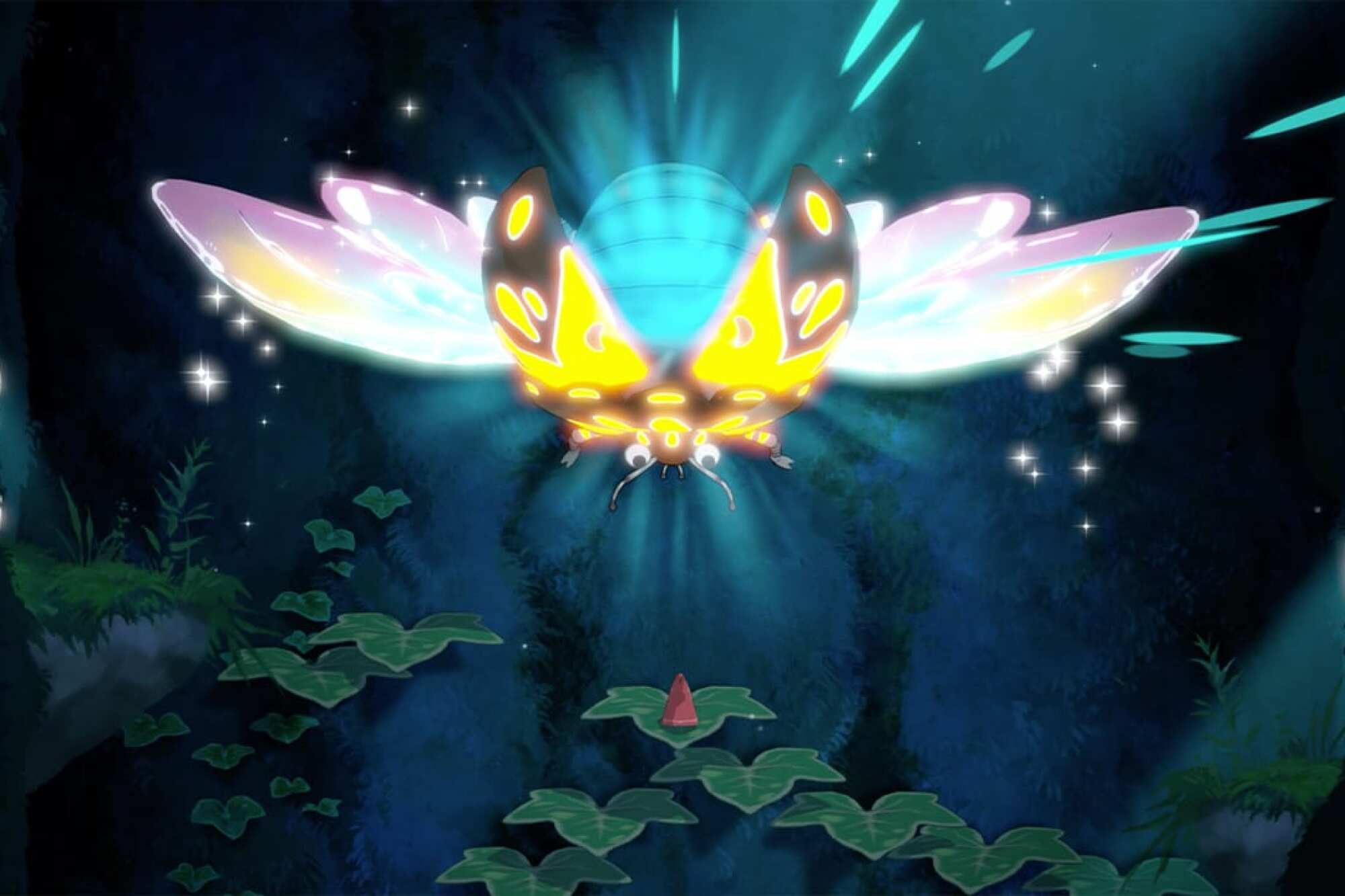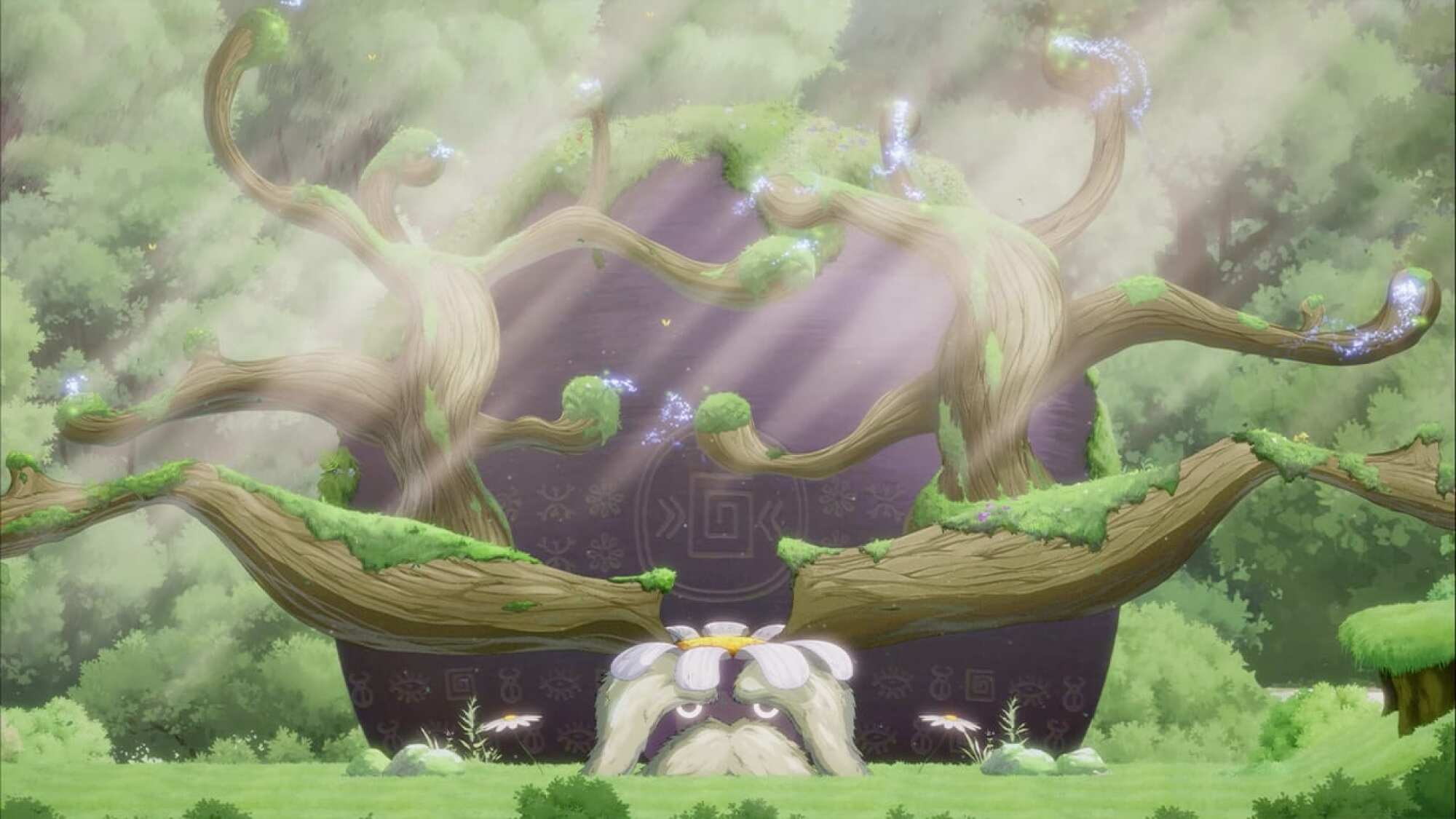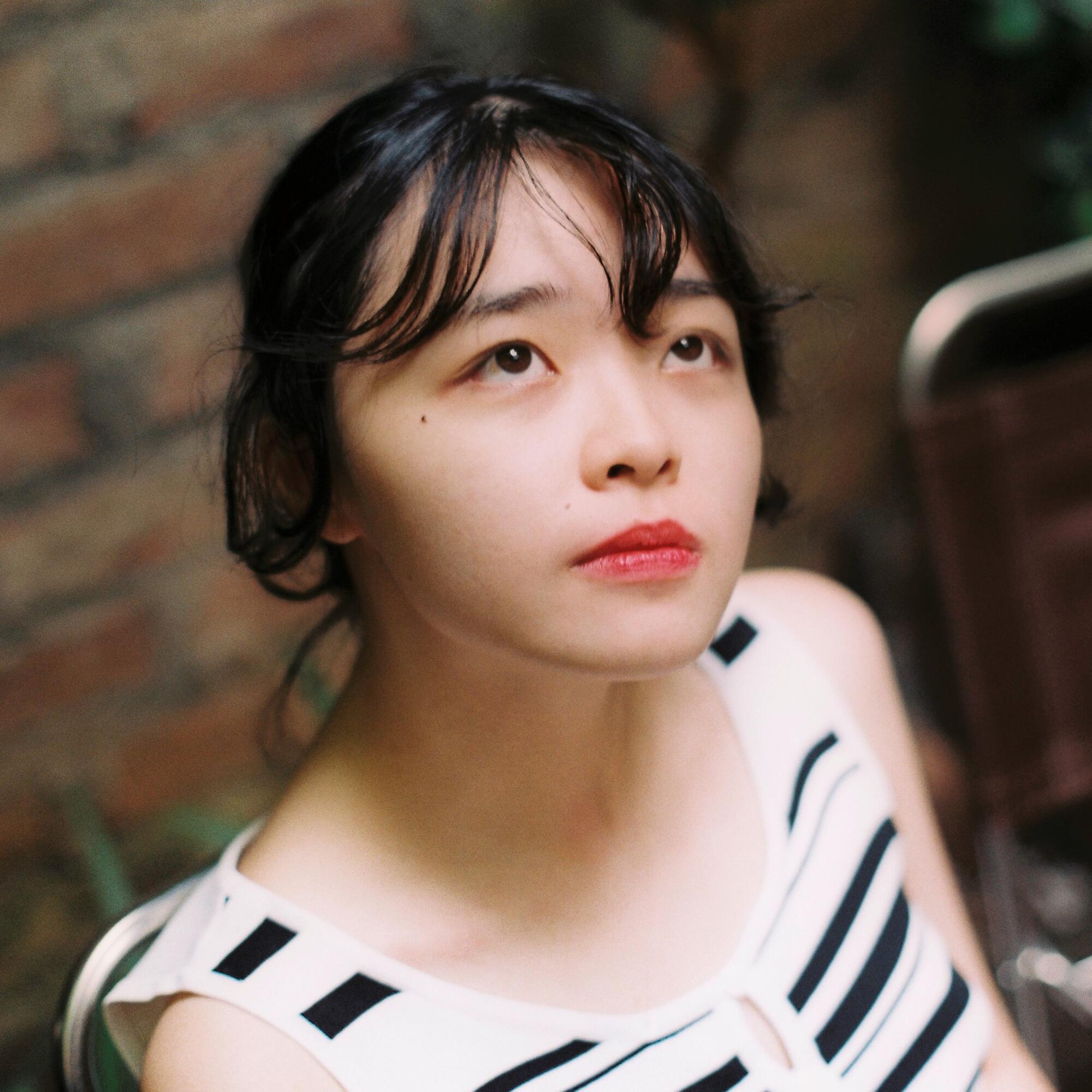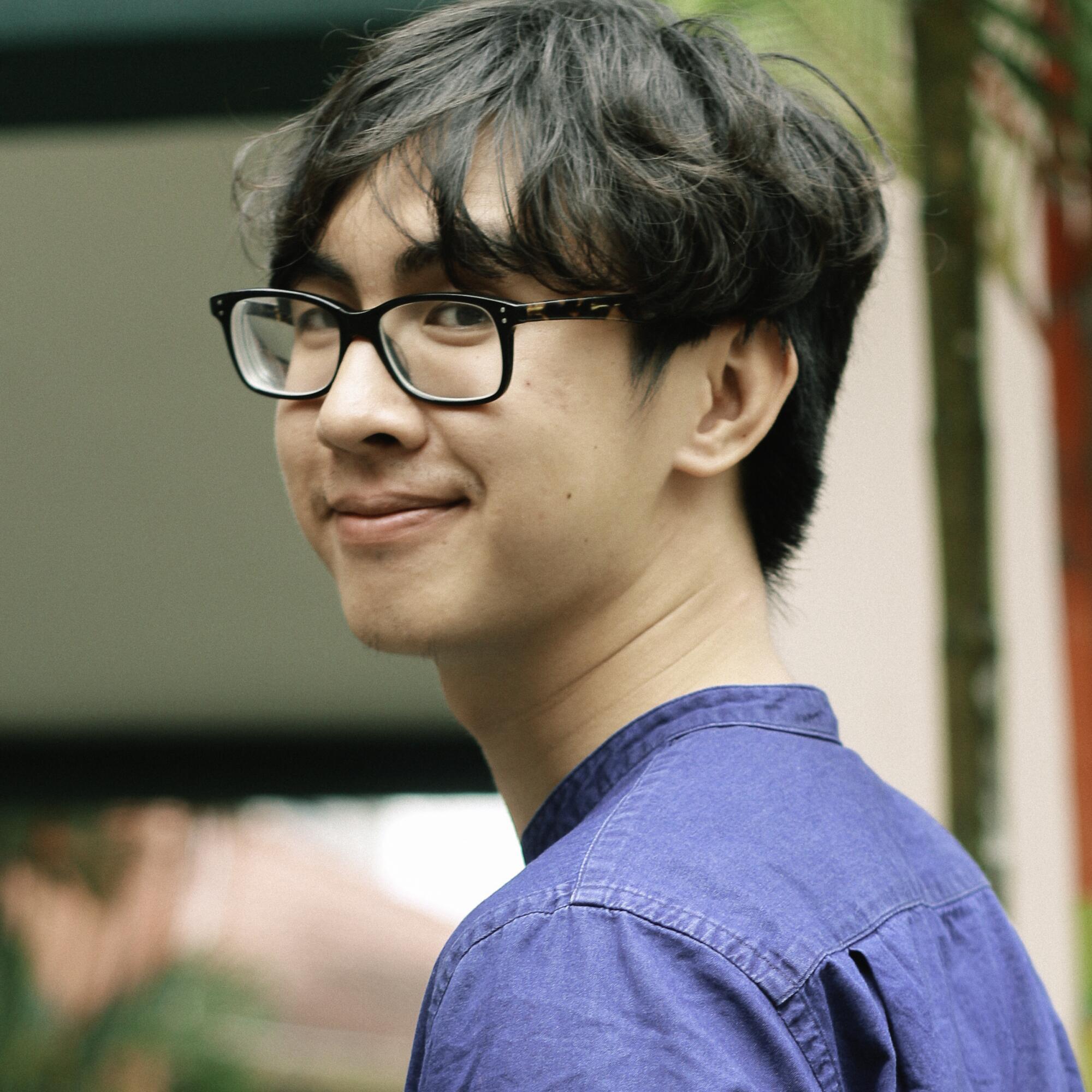
Think of “Hoa” as an interactive children’s novel, a fairy tale set in a lush, elegantly imagined forest world inhabited by luminescent creatures. Though it’s a game, it’s best not to rush through “Hoa.” It’s a work that inspires patience, asking us to linger on each of its carefully drawn screens.
“Hoa,” from a small Vietnamese studio, is one of 2021’s must-play games, a charmer that at its start literally forces you to pause and look at the scenery.
The fantastical natural wonderland — a work that has drawn comparisons to Studio Ghibli, which the team, of course, welcomes — is a place you’ll want to spend time. Whether it’s a snail who wears a leaf like a top hat, flowers that act like wind chimes or purple-glowing sea critters, “Hoa” is a work brimming with personality.
“I think heavily illustrated done right is always a joy to look at,” says Son Tra Le, the game’s art director. As Le talks about one of her favorite Studio Ghibli films, she pauses to twist her camera to capture the commotion behind her, where her cat is treating hanging kitchen utensils in her Hanoi, Vietnam, apartment as musical instruments.

After waiting for her kitty maestro to take a break, Le adds, “If you take any still from ‘My Neighbor Totoro,’ you’ll want to spend the rest of your life in it.”
Some of the team’s influences in the debut game may be easy to spot. The robed character that players control — a fairy named Hoa — no doubt bears some resemblance to the floating figures of “Journey,” the calming indie game sensation that the young principals of “Hoa” praise for giving them the confidence to chase an idea with a complete lack of violence and death-like fail states.
But “Hoa,” released this week for PCs and all major consoles, including the Nintendo Switch, transcends its inspirations, be it animated films, video games or the Vietnamese storybooks on which Le and game director Son Cao Tung were raised.
The charming and therapeutic “Cozy Grove,” inspired by “Animal Crossing,” is just one recent release in the “wholesome games” movement. Why the games resonate.
It does so by not only treating nature with reverence but by giving each of its scenes a dreamlike glimmer. As Hoa, we slowly bring this forest world back to life — or light. Sleepy animals become enchanted when Hoa enters their vicinity. Butterflies give Hoa new abilities, and while timing a hop can be a challenge, Hoa is never in any real danger.
This is a run-and-jump game where exploration and atmosphere, enhanced with a classical soundtrack, take precedence. It’s a largely wordless adventure about the triumph of nature.
The vibe, says Tung, is designed to be one of running around Hanoi gardens and local islands, a desire to capture Hoa’s joy of being out in the wild. Hoa’s quest is revealed slowly and only becomes fully clear at the game’s conclusion. Along the journey Hoa flutters, floats and swims through the world like a woodland tourist. Most important, with just a few facial expressions or blinks of an eye, we get a sense of each character’s persona.

When asked about the tone of the game, Tung recalls a moment when he first met Le at Singapore’s Nanyang Technological University, where he was studying game design and Le was focusing on animation.
“I think one of the things that inspired me the most, that I realize now, about the story is when I met Tra,” Tung says. “At that time we were at university, and there were a lot of snails crawling on the pathway. A lot of people would not pay attention or step on them. Tra saw the snails on the pathway and picked them up one by one and put them in the grass.
“You’re influenced by the people around you,” he adds, explaining the gentle nature of the game. Such clear tenderness in the game is what attracted Los Angeles-based partner PM Studios, a publisher known best for creating physical editions of digital games that wanted to more aggressively get into game distribution.
“When I saw the game, my mouth dropped,” says PM’s Paul Hartling, who caught a preview of “Hoa” via a showcase from Wholesome Games, a social media account and site of the same name that has created a makeshift genre that’s brought more visibility to games in which the joy is in uncovering a universe rather than obliterating it. “We felt the love,” says Le of the moment PM Studios reached out.
We’re so trained in video games to expect peril that the first time I encountered some larger creatures in “Hoa” or walked within a giant spiderweb, I approached them tentatively. But nothing in the forest, be it springy mushrooms or wide-eyed clams, is a threat. The only danger comes from more manmade items such as clearly intrusive robots, but even those are mostly cutesy, with spring-like steps that flick Hoa away rather than hurting the fairy.

Curiously, in the only scene in which Hoa experiences any real danger, the team at Skrollcat Studio strips control from the player. “The overall idea is that we don’t want anyone dying,” says Tung.
But there are also metaphorical life lessons in that approach.
“That’s just how we experience life,” says Le, adopting “we” in its collective form.
“It’s not like I can fight anyone, you know? It’s about enjoying things and your surroundings. You feel more when it’s fun and happy and calm and you’re making friends. But when things are scary, it feels like you’re not in control of things.”

“Hoa” is never frightening, but it is melancholic, and I did sit with the ending for a bit after shedding quite a few tears. The game likely can be completed in a few days, and should be relatively approachable for players of all ages. Only once did I stumble for a bit, during a dream sequence when controls were inverted and my coordination abilities failed me. “We want the game to be not very challenging for people to play,” says Tung, “but at the same time we don’t want it to be boring.”
That, of course, it never is. Interestingly, the world of the game was less wondrous and more post-apocalyptic in its initial stages. Tung, more of a gamer than Le, had to avoid some of his more game-inspired leanings to arrive at what eventually became “Hoa.”
“That’s what makes us a good duo,” says Le, joking that she brought the softer edges to the game. “I’m the idealistic person, but he’s more of the maker.
“But we do fight a lot,” she says, laughing. “A lot. But I think it worked out, didn’t it?”
If there was any tension, it’s not present in the end product. Think of “Hoa” as a digital relaxant, full of cute interactions designed to make you smile. I can’t wait to revisit it.
"Hoa"
More to Read
The biggest entertainment stories
Get our big stories about Hollywood, film, television, music, arts, culture and more right in your inbox as soon as they publish.
You may occasionally receive promotional content from the Los Angeles Times.











